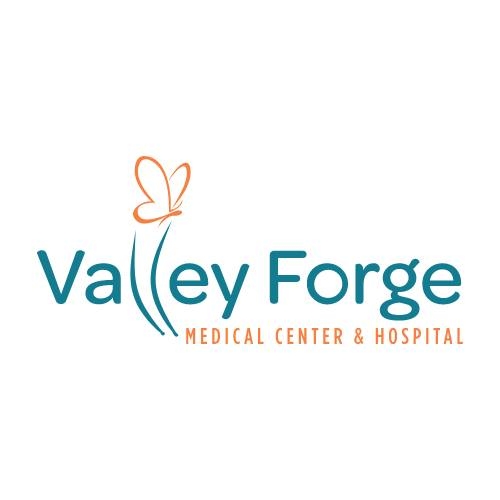
Understanding Drug Prices
Drug prices can significantly impact patients, healthcare systems, and society at large. A comprehensive understanding of how much drugs cost requires a closer look at the pricing structure and the various factors that influence these costs.

Drug Pricing Overview
In the United States, the price of a drug is often determined by a mathematical formula, typically based on the Average Wholesale Price (AWP) plus a dispensing fee. This system means that the pharmacy cash price—what consumers pay when buying medications without insurance—can vary widely [1]. The absence of strict regulation on drug prices has resulted in high costs for brand-name medications while simultaneously allowing for lower prices for generic alternatives.
Average Drug Prices
Drug TypeAverage Cost (Approx.)Brand-Name Drugs$600 - $1200 per monthGeneric Drugs$20 - $300 per month
This table illustrates the significant difference in costs between brand-name and generic drugs, highlighting the potential for savings when choosing generics.
Factors Influencing Drug Costs
Several factors contribute to the pricing of medications. These include:
Understanding these elements is essential for anyone seeking clarity on how much do drugs cost? and the complexities involved in drug pricing. By being aware of these factors, consumers can make more informed choices regarding their medication options.
Impact of Generic vs. Brand Drugs
Examining the differences between generic and brand-name drugs reveals substantial implications for drug costs. Understanding these distinctions helps consumers make informed decisions regarding their medication options.
Generic Drug Cost Savings
Generic drugs offer significant savings to consumers. They accounted for 90% of the 3.8 billion retail prescriptions dispensed in the U.S. in 2019, with 92% filled for $20 or less [2]. On average, the cost of generics is 80-85% less than that of brand-name medications. This affordability stems from the absence of intensive research and development costs that brand-name drugs incur, which leads to competitive pricing in the generic drug market.
Drug TypeAverage Cost SavingsGeneric Drugs80-85% less than brand-name drugsBrand-Name Drugs75% of total prescription costs
Despite the cost benefits of generics, it’s essential to note that if individuals have adverse reactions to a generic, the brand-name alternative might be necessary to ensure safety and efficacy.
Brand-Name Drug Expenses
Brand-name drugs, while often more effective for some individuals, still account for nearly 75% of the total prescription costs. Consumers may face significant financial burdens when relying on brand medications due to their higher price points. Brand-name drugs typically enter the market after comprehensive clinical research and continue to hold a reputation for quality and effectiveness, impacting consumer preference despite the costs.
Brand-name drug prices can create challenges for individuals trying to manage their medication needs within a budget. The high expenses associated with these medications can lead to decisions regarding healthcare and medication adherence.
Drug Pricing OverviewAverage Cost vs. GenericsBrand-Name DrugsMore expensive than genericsMarket Share75% of total prescription costs
The choice between generics and brand-name drugs ultimately depends on individual health needs, financial constraints, and potential side effects. Families must weigh these factors as they navigate the complexities of prescription medication costs. The discussion around the affordability and efficacy of both types of medication is central to understanding how much do drugs cost?.
Drug Expenditures in the U.S.
Rising Prescription Drug Spending
In the United States, nearly $334 billion is spent each year on prescription medications. This expenditure has significantly risen over the years; in 1990, pharmaceutical spending accounted for 5.6% of total healthcare costs, but by 2017, this figure grew to almost 10%.
The rising costs of prescription drugs have substantial implications for patients. Many individuals may find themselves unable to afford critical medications. Consequently, they might skip doses, split pills, or abandon treatment altogether to cope with high prices [4].
Here is a breakdown of drug spending over the years:
YearTotal Spending (in billions)Percentage of Healthcare Spending1990$405.6%2000$1288.0%2010$2639.4%2017$33410.0%
Implications of High Drug Costs
The implications of high drug costs are profound and multifaceted. Americans pay significantly higher prices for brand-name drugs compared to people in other industrialized nations. An analysis by the Rand Corporation revealed that prices for brand-name drugs in the U.S. are, on average, 344% higher than in other countries, with some medications costing up to 679% more [5]. This discrepancy in pricing contributes to a frustrating experience for consumers.
A staggering 79% of Americans find prescription drug prices unreasonable, and nearly 30% report not filling prescribed medications due to cost barriers. For instance, the cost of hepatitis C drugs has seen a stark contrast, with prices ranging from $94,000 in the U.S. to approximately $5,000 in Korea and $300 in Japan and India [2].
The effects of inflated drug charges extend beyond individual patients, impacting families and healthcare systems, ultimately leading to broader public health issues. To better understand the implications of drug use, visit our article on how to help someone with drug addiction.
Influence of Market Players
The pricing of pharmaceuticals is significantly impacted by various market players, including pharmaceutical companies and pharmacy benefit managers (PBMs). Understanding their roles can shed light on how much drugs cost and the complexity of drug pricing.
Role of Pharmaceutical Companies
Pharmaceutical companies are the primary manufacturers of medications and play a crucial role in determining drug prices. These companies invest heavily in research and development, which contributes to the high costs of bringing new drugs to market. In fact, the pharmaceutical industry often increases prices on a variety of drugs, with over 250 medications experiencing a 5% price hike as recently as January 1, 2020.
Their pricing strategies can vary widely but often rely on factors such as production costs, the uniqueness of the drug, and market demand. The American Medical Association’s TruthinRx campaign identifies pharmaceutical companies as a significant player in the drug pricing ecosystem, emphasizing their influential role in pricing negotiations that frequently exclude patients and healthcare providers from the conversation.
Impact of Pharmacy Benefit Managers
Pharmacy benefit managers (PBMs) act as intermediaries between insurers, pharmaceutical companies, and pharmacies. They negotiate drug prices on behalf of insurance companies and often determine which medications are covered under a specific health plan. This can significantly influence out-of-pocket expenses for patients.
PBMs play a crucial role in managing drug formularies, which list the medications that are covered by insurance. By negotiating discounts with pharmaceutical companies, PBMs aim to keep drug costs down for insurers. However, this process does not always translate to lower costs for patients. Increasingly, insurers have shifted costs onto patients through higher copays, deductibles, and premiums, which may result in discouraging necessary care.
The influence of these market players creates a complex pricing landscape that can leave patients confused and frustrated about why drug costs continue to rise. The interplay between pharmaceutical companies, PBMs, and health insurance companies underscores the necessity of examining the economic factors at play in prescription drug pricing. For further inquiry into the topic, explore our articles on how much do drugs cost?.
Patient Perspectives on Drug Costs
Understanding the impact of drug costs on individuals is essential. Many patients face significant challenges regarding medication affordability and often seek various strategies to manage these expenses.
Affordability Concerns
Affording necessary prescriptions poses a real problem for many Americans. Approximately 25% of individuals report that high drug costs make it difficult to afford required medications [6]. This problem is particularly acute among specific demographics. Just over half of adults express worry about being able to meet their family's prescription drug expenses. This concern is amplified among Black and Hispanic adults, younger adults, and those with household incomes under $40,000. Individuals taking four or more medications also report heightened anxiety about these costs.
Many consumers report that they have had to make difficult choices regarding their health. For instance, about three in ten adults admit to not taking their prescribed medications at some point in the past year due to financial constraints [8]. Additionally, a significant 79% of Americans consider U.S. prescription drug prices unreasonable, which often leads to decisions that could compromise health.
Coping Strategies for High Drug Prices
To navigate the financial strain caused by high drug prices, patients employ various coping strategies. These could include:
It's critical for patients facing distress due to drug pricing to pursue these strategies and remain informed about potential solutions. With rising pharmaceutical expenses and an intricate healthcare landscape, awareness can play a vital role in managing personal health journeys. For more insights into drug-related issues, consider exploring how much do drugs cost? or how to help someone with drug addiction.
Comparison to International Drug Prices
The pricing of pharmaceutical drugs in the United States significantly diverges from those in other countries. Understanding these disparities can shed light on the broader question of how much do drugs cost?
U.S. Drug Pricing Disparities
Prices for prescription medications in the U.S. are notably higher than those in comparison countries. Research highlights that, in some instances, U.S. prices can be up to 10 times more expensive than those in other nations. For example, the price of Anoro Ellipta, used for treating chronic obstructive pulmonary disease, is $248 in the U.S. compared to lower prices in Australia, Canada, and France [5].
Furthermore, U.S. brand drug prices average nearly 3.5 times the prices found in OECD countries, and almost double that of prices in Canada, the United Kingdom, Germany, or France. This trend is particularly evident in high-cost drugs, such as biologics and oncology treatments [2].
Drug TypeU.S. PricePrice in Comparison CountriesAnoro Ellipta$248Lower in Australia, Canada, FranceAverage Brand Drug Price3.5 times higherVarious OECD countriesExample Oncology TreatmentHigher by at least 100%Canada, UK, Germany
Insights from Global Comparisons
The disparities indicate substantial issues within the U.S. pharmaceutical market. Generic drugs have shown slightly more favorable pricing, with U.S. prices averaging 84% of those in other OECD member nations. In 2019, generics accounted for 90% of the 3.8 billion retail prescriptions dispensed in the U.S., with 92% filled for $20 or less.
The costs stemming from pharmaceutical companies also play a role in these high prices. Companies often acquire patents for existing drugs and subsequently raise their prices. Some even file multiple patents or engage in legal battles to hinder potential competitors from entering the market.
Overall, the comparison between U.S. drug prices and those from other countries underscores a pressing public health concern, particularly as individuals seek affordable options amid rising healthcare costs. To further understand this issue, readers may explore related articles, such as should drugs be legalized? and how to help someone with drug addiction.
References
[2]:
[3]:
[4]:
[5]:
[6]:
[7]:
[8]:
.svg)





